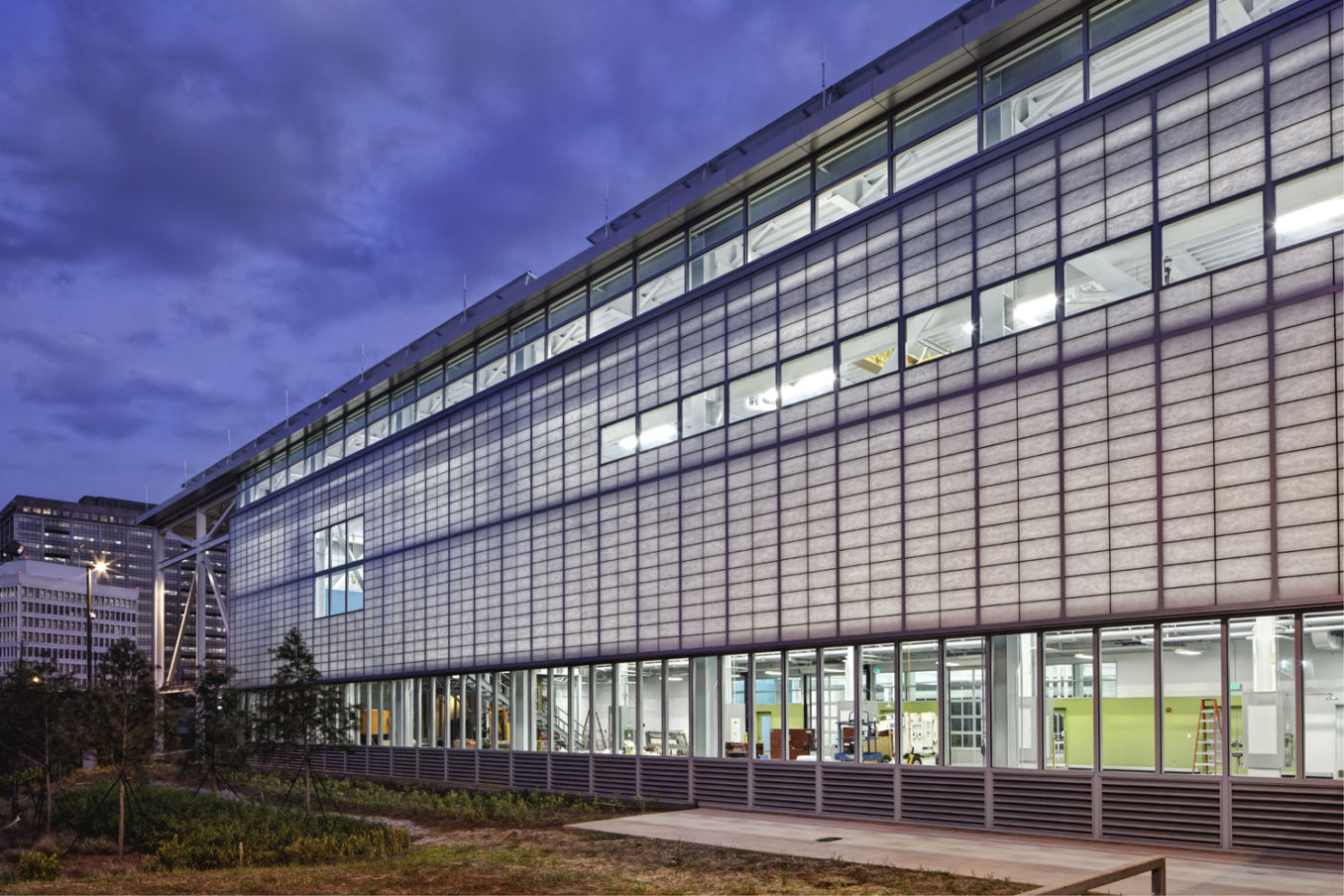
 PROVIDENCE, R.I. — Each year, some of the most outstanding teams and individuals within Gilbane are honored with national awards in teamwork, safety, innovation and excellence. The most coveted award Gilbane presents is the Iver Johnson Builders of the Year, which is given to the team that delivers quality, safety, client satisfaction, teamwork, sustainability and much more. This year's award goes to the Carbon Neutral Energy Solutions Laboratory at the Georgia Institute of Technology.
PROVIDENCE, R.I. — Each year, some of the most outstanding teams and individuals within Gilbane are honored with national awards in teamwork, safety, innovation and excellence. The most coveted award Gilbane presents is the Iver Johnson Builders of the Year, which is given to the team that delivers quality, safety, client satisfaction, teamwork, sustainability and much more. This year's award goes to the Carbon Neutral Energy Solutions Laboratory at the Georgia Institute of Technology.
Georgia Tech's CNES Lab sets a new standard for sustainable design for buildings of its type by optimizing passive energy technologies, reducing electricity loads and maximizing the use of renewable energy. The design build team of Gilbane and HDR worked within a tight budget and aggressive schedule to get this LEED-Platinum lab successfully delivered.
“The CNES team really exemplifies what the Builders of the Year award is all about,” says Thomas F. Gilbane, Jr., chairman and CEO. “Our team, together with HDR, fully engaged with the owner and evaluated all options to reach Georgia Tech's aggressive energy efficiency goals while staying on target for budget and schedule. In the end, we have a state-of-the-art facility that would not have been possible without the innovative decisions and dedication of this team.”
The design-build team coined the phrase, “integrated design for value process” as its philosophy to the project. This meant the project involved:
- A fully integrated team
- Thoughtful, informed decisions
- Real-time cost models, not value engineering
- Fully implemented Building Information Modeling
“While the CNES lab is an amazing facility, it's the innovative design and build process that make it such an achievement,” notes Michael C. Brown, Gilbane's southeast regional manager. “The collaboration, teamwork and problem-solving mentality of the entire CNES project team, including Georgia Tech, are a model for challenging the status quo and delivering highly complex, sophisticated facilities within a realistic timeframe and budget.”
This building had a goal of energy neutrality but the high energy requirements of the research programs housed within the building presented a tremendous challenge. The design-build team created a series of four alternative building concepts that were evaluated through further energy modeling to determine which options and which energy-savings features to pursue.
Working together, the team identified possible strategies; evaluated them for effectiveness, cost and constructability and determined their long-term viability. This inclusive approach helped the team identify and incorporate high-benefit, low-cost strategies only and guided the project to become the first of its type by challenging conventionally held assumptions about function, design and construction.
Get a tour of the facility and hear from the design-build team about its features here.


 Join our thriving community of 70,000+ superintendents and trade professionals on LinkedIn!
Join our thriving community of 70,000+ superintendents and trade professionals on LinkedIn! Search our job board for your next opportunity, or post an opening within your company.
Search our job board for your next opportunity, or post an opening within your company. Subscribe to our monthly
Construction Superintendent eNewsletter and stay current.
Subscribe to our monthly
Construction Superintendent eNewsletter and stay current.